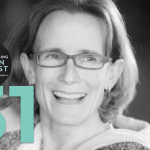Your meetings are the manifest expression of your culture. Slow down and take that in, because it’s important.
Every time you call a meeting — you know, gather people around a table, a phone, or a video call — you put your values, norms, priorities, and leadership on display. A meeting isn’t just a reflection of your culture, it is your culture. So, as a conscious leader, how can you raise the vibration, improve the connections, and accelerate the positive results of a meeting? To tackle this question and up-level your meetings, let’s first agree on a few points:
- Meetings are the manifest expression of your culture — time, relationships, and priorities.
- Leaders spend 90 percent of their time preparing, attending, and reviewing meetings.
- There are no conscious meetings, just conscious people.
- While most meetings stink, they can deliver the value we want.
And yes, the gut sense you have that traditional meetings aren’t working is backed by research — and that research exists because we hold a lot of meetings. In the U.S. alone, we hold between 36 million and 56 million meetings every day. And the estimated cost of lost productivity from ineffective meetings is anywhere from $70 billion to $283 billion each year.
Can conscious leadership improve our meeting experience? Of course. Lorna Davis, former CEO of DanoneWave and chief manifesto catalyst of Danone, credited the remarkable success of her team to five years of perfecting their meetings. Too simple, you say? Remember, meetings are the manifest expression of your culture. By tweaking and optimizing meetings, Ms. Davis also refined and optimized her business.
As a conscious leader, you can achieve better and faster decisions, increase trust, deepen engagement, and strengthen collaboration by making your meetings shine. Since we’ve already agreed that there are no conscious meetings, only conscious leaders, we can talk about how to apply conscious leadership to meetings beyond the great practice of starting meetings with three minutes of silence and presence. What follows are nine practices that apply my Blueprint for Conscious Leadership before, during, and after each meeting – the practices of wisdom, love, and courage.
Wisdom
Wisdom means going below the surface and beyond the obvious. When you’re going for insight (going deep) and perspective (going wide), you’re applying your wisdom. Don’t be the leader who shows up to meetings unprepared. Think deeply and widely so you can guide and awaken your people to have meaningful discussions.
Wisdom Before: Pause, plan, and prepare. In other words, show up ready for the meeting and be conscious of what, why, and how you’re going to lead this precious time with people you care about. Answer these four questions before meetings:
- Purpose: Why are we getting together? How does this tie to our bigger picture? “Our meeting today serves our focus on creating a culture of fun.”
- Objectives: What, specifically, are we here to achieve? State each objective as a question.“How do we shorten wait times?” “What’s the best way to onboard Sally?”
- Style: What’s best for us in this meeting? Are you looking to collaborate, listen, solve problems, decide, or brainstorm?
- Team: Who really needs to be invited? No one more and on one less.
Wisdom During: Listen with deep curiosity. I bet you’ve heard of the Beginner’s Mind, and you can practice that while your colleagues are speaking. Listen as though you’re hearing them for the first time. Don’t fall into, “I’ve heard this a thousand times,” or, “I know exactly what Sally thinks,” or, “this is boring.” Challenge yourself to be curious about what’s being said and felt — and what isn’t.
Wisdom After: Reflect with a light touch. On a whiteboard, flipchart, or PowerPoint, draw ye olde Ben Franklin table. At the end of a meeting, Christina Volgyesi, marketing director at Dr. Bronner’s, divides a flipchart page into two columns. She titles the left column “plus” and the right column “delta.” Under “plus,” she captures what worked in the meeting. On the “delta” side, she captures what the team can change to make the next meeting even better. As you do this, let each person contribute, capture their comments verbatim, and don’t argue with anyone. And, of course, take these notes and apply them to the very next meeting.
Remember, wisdom can only be manifested in action, not in theory.
Love
Love is wanting to do well for others. When we brought home our nine-week puppy, Nola, I fell immediately in love. I’m happy to blow off work and get on the floor to play with her and make her happy, and I’ve been buying her all kinds of chew-sticks. Because I love this little furball, I give her time and attention and make her happy. Yes, that’s love. Love at work is no different — it’s a desire to do good for others by giving them your time and attention and helping them do well.
Love Before: Serve with humility. Visualize each person that’s coming to the meeting, and reflect on how you can contribute to their happiness (even though I’m a firm believer that we’re each responsible for our own happiness). See if you can figure out their needs and how you can serve them in the meeting. What’s their style? What pressures are they dealing with? What are their goals and demands? Basically, answer for yourself, “How can this meeting benefit this person?”
Love During: Act with compassion. Nothing will block the flow of love in a meeting like embarrassing someone or triggering their insecurities. Google’s Project Aristotle definitively concluded that psychological safety is the most significant factor for team effectiveness. Your leadership presence has a direct impact on the feeling of psychological safety in the meeting. Compassion and cruelty cannot coexist, so be compassionate.
Love After: Lavish your people with gratitude. The best way to show gratitude is one-to-one and making it specific, timely, personal, and sincere. Zach Adelman, founder and CEO of Navitas Organics, starts his Executive Group meetings with brief exchanges of gratitude. In just a few minutes, the team strengthens their field of love, and their decision-making improves. Verbal, in-person gratitude outranks monetary bonus as the most desired form of thanks at work.
To put it simply, love is the connective energy and behavior that brings safety and wellbeing into the meeting.
Courage
Courage is walking toward what you’d rather run away from. Courage isn’t, and never will be, the absence of fear or anxiety. Au contraire, courage is only possible when you’re scared and anxious. As a conscious leader, you have a unique opportunity to face the hard stuff in meetings — topics, issues, relationships, behaviors – and engage with it.
Courage Before: Name the hard stuff. Micha Mikalian, founder and CEO of Intently, courageously takes stock of difficult, scary, uncertain, and uncomfortable topics and decides how to add them to the meeting agenda. He knows not to blurt something out in a moment of frustration. Rather, he decides in advance how to name the issue on the agenda and address it in the meeting.
Courage During: Explore differences. We’ve heard so much about how truly strong teams are diverse — and that includes diversity of opinion and perspective. Activate your courage to seek out different voices in the meeting by inviting, even insisting, on hearing dissenting positions and opinions. Yup, it’s scary to hear something very different, and it’s scary to invite possible dissent and debate. But exploring the edges of perspective is more than energizing and engaging; it’s remarkably productive.
Courage After: Be purposeful. There’s demanding and disciplined work that happens after every meeting, the work of meticulous follow-through. Implement the decisions and actions that you committed to in the meeting. Distribute the courage by identifying a “champion” for each commitment, and agree on a timeline for completion. Stick with these agreements, and help people achieve their commitments.
Courage has nothing to do with not having fear and anxiety in a meeting. You’re courageous when you acknowledge and allow anxiety to guide you past the edge of your comfort zone.
The bottom line
It takes vision, practice, and collaboration to change your meeting culture, even if you’re the leader of the meetings. I invite you to start by setting an example. Do a bit of research with your team about gaps in your meetings and where you need to pay attention, then pick a couple of these nine practices and begin to apply them.




